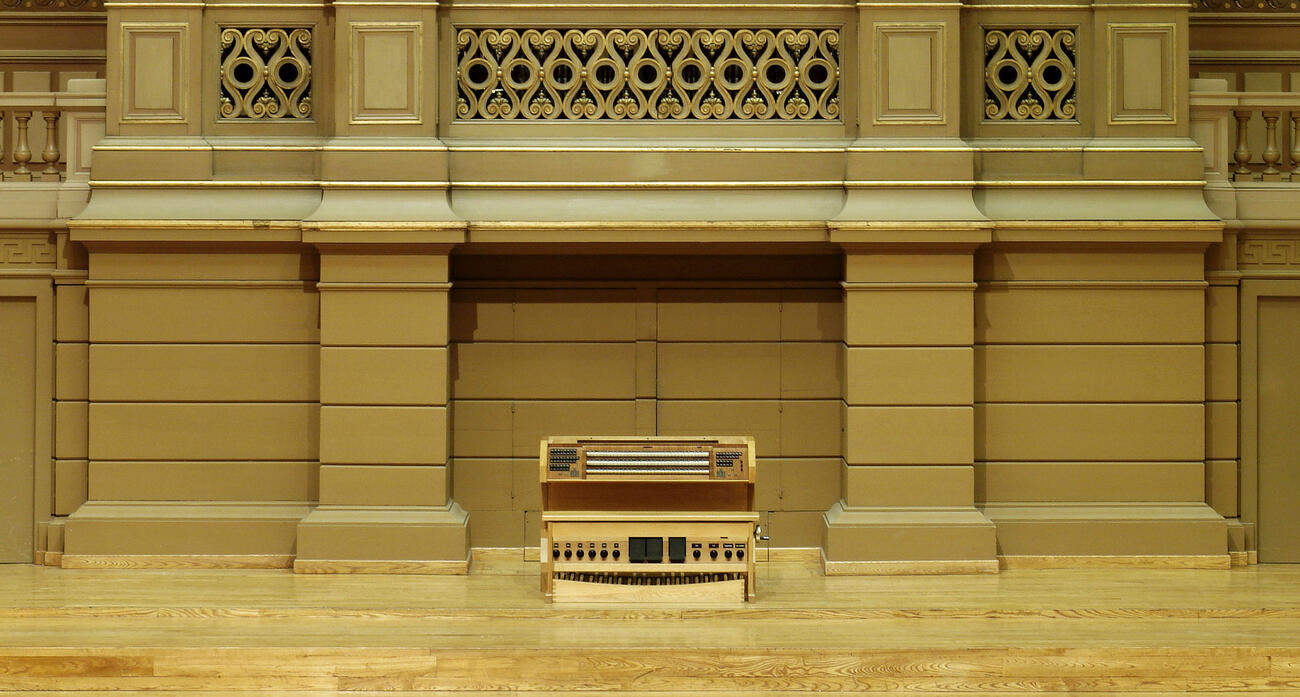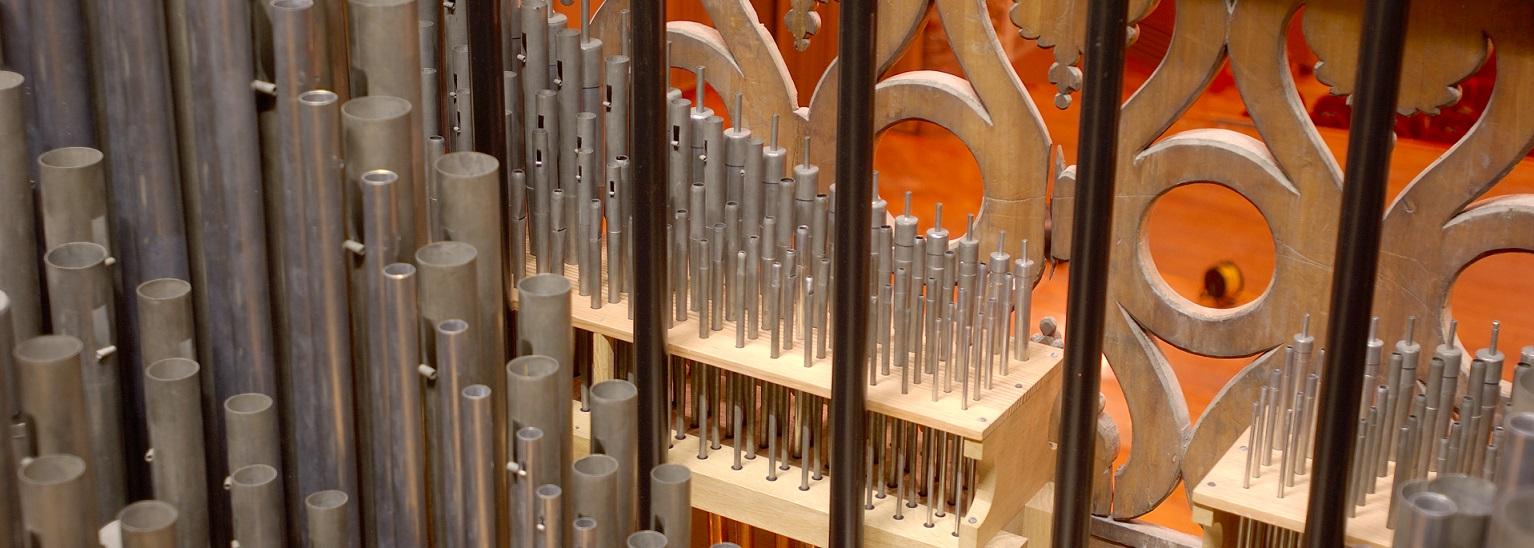Organ
Inaugurated in 1890 by the great French organist Charles-Marie Widor, the Schyven organ in the Salle Philharmonique now has 3676 pipes...

Built in 1888 by the organ builder Pierre Schyven, initially for an industrial exhibition in Brussels, the organ in the Salle Philharmonique was installed at a time when, following the example of Great Britain, the great concert halls of Europe and the United States felt that having a symphonic organ was an important status symbol. Moving out of the purely religious sphere and entering civil society, the organ could join forces with, or replace, the orchestra. In 1900, the Schyven organ was fitted with a casework and side staircases. Badly damaged after the First World War, it was extended and strengthened in 1925 by the Italian organ builder Francesco Vegezzi-Bossi. Powered by electricity from 1939, it was extended again in 1956 and was thus inaugurated by the great French organist Jeanne Demessieux, professor at the Liège Conservatoire at the time.
By the end of the 20th century, the instrument was clearly in need of further restoration. A restoration project was launched in 1997, involving a number of specialists. Undertaken between 2002 and 2005, the work was entrusted to Manufacture d'Orgues Thomas (Ster-Francorchamps) and Manufacture d'Orgues Luxembourgeoise (Lintgen). Inaugurated in September 2005, the new instrument was returned to its original state (the additions from the 1920s-1950s were removed), augmented by nine new stops, giving its sound greater power, and by a mobile electric console, equipped with a sequencer, which can store almost 4,000 stop combinations.
In its current state, the organ has 3,676 pipes. There are 1947 old pipes dating from 1888 (53%) and 1729 new pipes (47%). The smallest pipe measures 19.5 cm and weighs 22 g, while the largest is 5.50 m long and weighs 155 kg. The organ has 55 stops, 3 manuals with 61 keys and a pedalboard with 32 keys. 3,464 pipes (94%) are cast in a metal alloy of lead and tin called "étoffe". 212 pipes (6%) are made of wood (basswood, spruce and northern red fir). The instrument is capable of producing a sound ranging from the tiniest pianissimo to the most powerful fortissimo.
Watch this film made in 2005 to mark the restoration of the Schyven organ.
